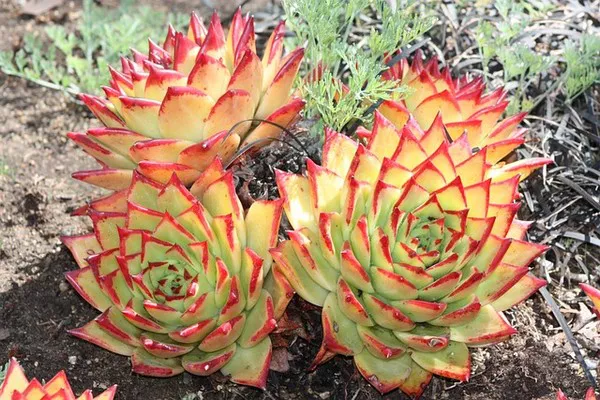Succulents have captivated the hearts of plant enthusiasts and gardeners alike with their unique beauty, low-maintenance requirements, and adaptability to various environments. These resilient plants, known for their fleshy leaves and water-storing abilities, have gained popularity as houseplants, outdoor ornamentals, and even components of intricate xeriscaped landscapes. One of the intriguing questions that often arises among succulent enthusiasts is: How long do succulents actually live? In this article, we will delve into the factors influencing the lifespan of succulents, the remarkable survival mechanisms they employ, and tips for extending their years of vitality.
Factors Influencing Succulent Lifespan
Succulents, encompassing a wide range of species from the Crassulaceae, Agavaceae, and Euphorbiaceae families, exhibit varying lifespans based on several factors:
1. Species Diversity:
The lifespan of succulents can differ significantly based on their species. Some succulents, like the popular Echeveria and Sempervivum species, are monocarpic, meaning they flower, produce seeds, and then die. On the other hand, many agave species are known for their decades-long lifespans, sometimes spanning up to 25 years or more.
2. Growth Rate and Size:
The rate of growth and the size a succulent reaches during its lifespan can also impact how long it lives. Faster-growing succulents might have shorter lifespans compared to slow-growing ones due to differences in resource allocation and energy expenditure.
3. Habitat and Environmental Conditions:
Succulents have evolved to thrive in diverse habitats, from arid deserts to high-altitude mountains. Their lifespan is influenced by the specific conditions of their native environment. Factors such as temperature fluctuations, sunlight exposure, humidity, and soil quality can play a pivotal role in determining their longevity.
4. Care and Maintenance:
Proper care and maintenance significantly affect the lifespan of succulents. Overwatering, inadequate drainage, or improper soil composition can lead to root rot and other diseases, shortening their lifespan. Conversely, providing the right balance of water, sunlight, and nutrients can contribute to their overall health and longevity.
Survival Mechanisms of Succulents
Succulents have evolved various survival mechanisms that enable them to endure harsh conditions and potentially live longer:
1. Water Storage:
One of the most distinguishing features of succulents is their ability to store water in their fleshy leaves, stems, or roots. This adaptation allows them to survive extended periods of drought by utilizing the stored water reserves during times of water scarcity.
2. Reduced Transpiration:
Succulents have adapted their leaf structures to minimize water loss through transpiration. They often have thick, waxy coatings or tiny hairs on their leaves that help retain moisture and reduce evaporation.
3. CAM Photosynthesis:
Many succulents utilize Crassulacean Acid Metabolism (CAM) photosynthesis, a unique carbon fixation pathway. CAM allows succulents to open their stomata at night, reducing water loss while still conducting photosynthesis. This adaptation is especially advantageous in arid environments.
4. Propagative Abilities:
Some succulents have the remarkable ability to propagate through various methods, such as leaf or stem cuttings, offsets, or even whole plantlets produced at the ends of stolons or runners. This propagation ability ensures the continuation of the species even if individual plants perish.
Extending the Lifespan of Succulents: Tips and Best Practices
To foster the longevity and vitality of your succulents, consider the following care tips:
Proper Watering: Succulents prefer a “soak and dry” approach to watering. Allow the soil to dry out completely between waterings to prevent root rot. Be cautious not to overwater, as excess moisture can lead to fungal issues.
Well-Draining Soil: Plant succulents in well-draining soil mixes that prevent water from pooling around the roots. Adding perlite or sand to the soil mix can enhance drainage.
Appropriate Light: Place succulents in locations with adequate sunlight. While they thrive in bright light, some species can tolerate indirect light or partial shade. Rotating the plants periodically ensures even growth and prevents stretching towards the light.
Container and Potting: Choose pots with drainage holes to allow excess water to escape. Transplant succulents into slightly larger containers as they grow, providing ample space for root expansion.
Avoid Frost: If you live in a region with cold winters, protect your succulents from frost. Some species are more cold-tolerant than others, but in general, it’s best to bring potted succulents indoors during freezing temperatures.
Minimal Fertilization: While succulents do require nutrients, they generally thrive with infrequent and diluted fertilization. Use a balanced, low-nitrogen fertilizer during the growing season.
Conclusion
Succulents, with their captivating forms and incredible adaptations, have managed to conquer a vast array of environments and landscapes. Their lifespan varies greatly based on factors such as species, habitat, care, and genetic makeup. While some succulents are short-lived and monocarpic, others can endure for decades under the right conditions. By understanding their unique survival mechanisms and implementing proper care practices, enthusiasts can extend the lifespan of these remarkable plants, ensuring that their beauty continues to grace our gardens, homes, and landscapes for years to come.


